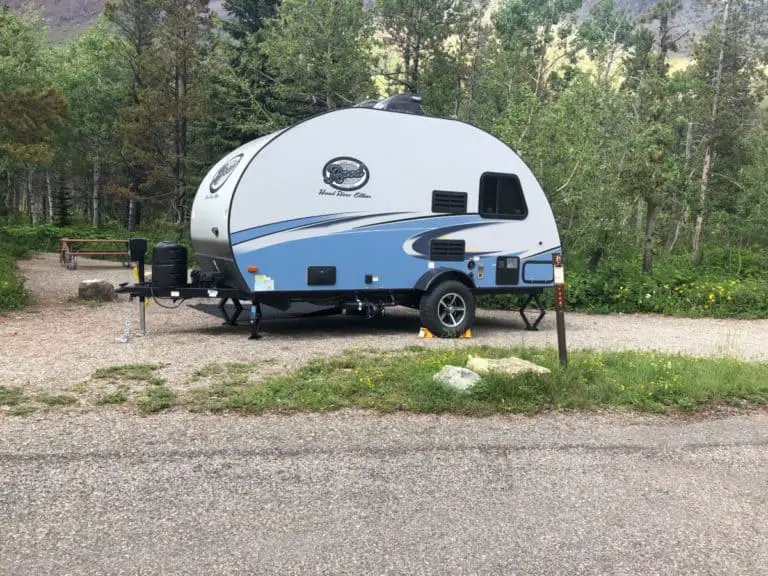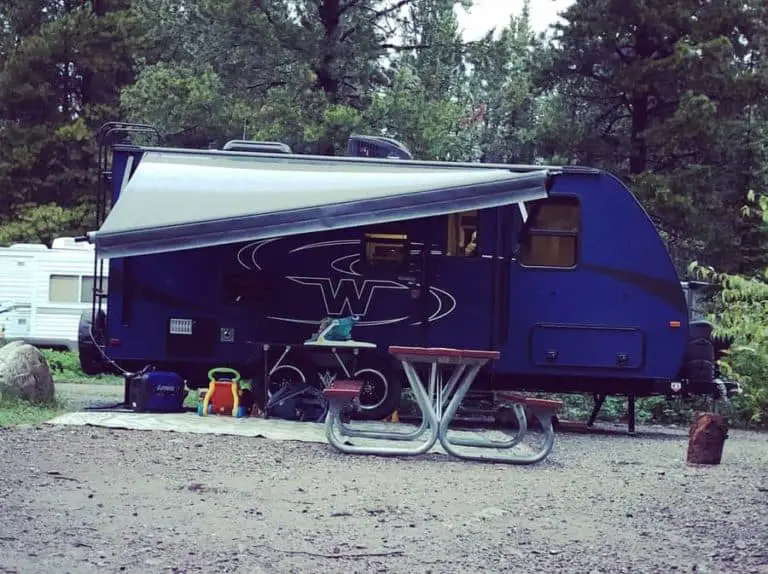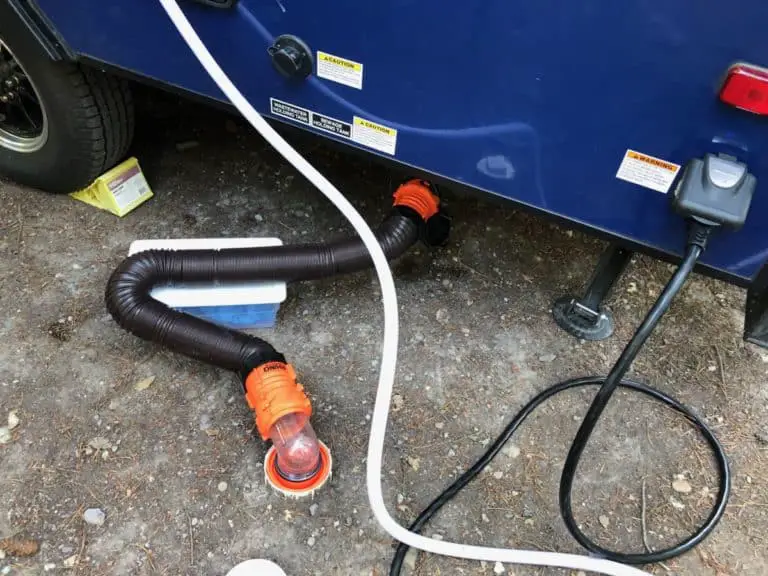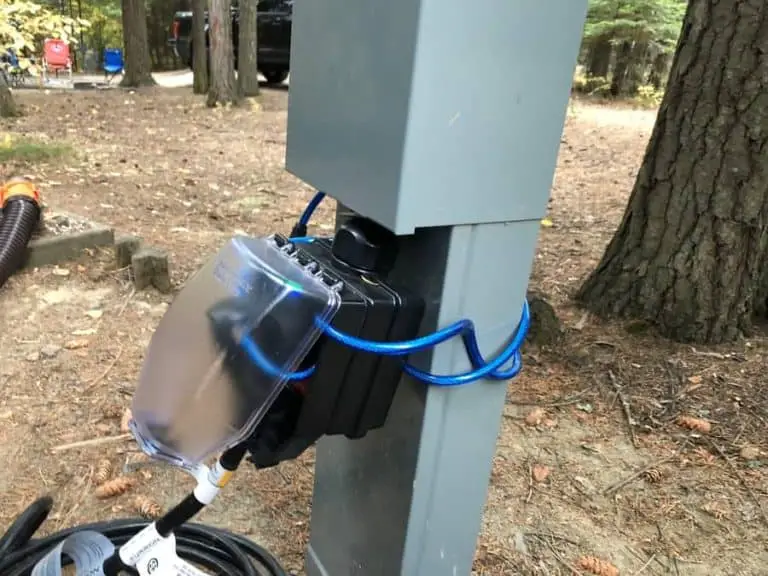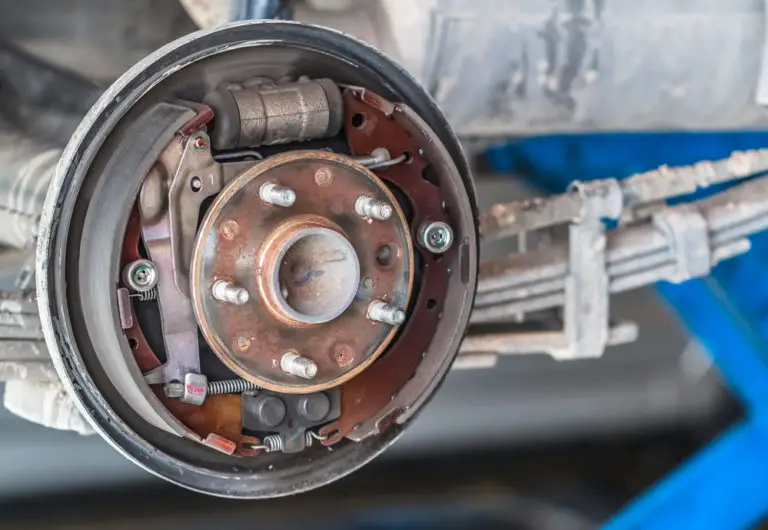How to Put a Roof Rack on a Travel Trailer
Adding a roof rack to a travel trailer or 5th wheel can be a great way to add extra storage for travel, but the process must be undertaken carefully. Whether you get a mechanic to install the roof rack for you or tackle the installation yourself, knowing how to install it correctly can mean the difference between a successful result and a leaky, crumpled roof.
Below you’ll find a list of the steps necessary for choosing and installing a roof rack on your camper. Installing a roof rack can be complicated depending on the RV model, so preparing for the installation can take a lot of guesswork out of the process.
Steps to Install a RV Roof Rack
If you decide to take the leap and install a roof rack yourself, the smartest thing to do is to follow the included instructions carefully. There are so many different configurations of roof racks that the instructions for installation are specific to each setup. However, a do-it-yourself roof rack installation can be broken down into these seven simple steps:
- Choose your roof rack. Be sure to copy down your travel trailer’s specifications and measurements before shopping so you know which roof racks will fit your vehicle.
- Get your installation gear together. Making sure you have all the necessary tools and materials before you start the installation can prevent delays during the job.
- Install the base. For travel trailers that have built-in side rails, this step of the roof rack installation process may be unnecessary. For bare trailer roofs, the base of the roof rack must be secured parallel to the roof of the travel trailer from front to back. Keep in mind that you’ll want to avoid having to screw over vents or other roof components.
- Drill the holes. Holes have to be drilled into the roof of the travel trailer to act as a mounting point for the brackets that hold the roof rack on the roof. Be sure to use the smallest drill bit possible since you want to avoid any loose screws where moisture can get through. Use a stud finder to find the framing in your roof to secure the rack to.
- Secure the roof rack. Once the base of the roof rack is secured to the travel trailer roof, the holes are drilled, and the base is bracketed down, the rack itself can be added. The rack is typically mounted at fixed points and screwed down. It’s important that each part of the roof rack is screwed down tightly to prevent the rack from falling off during travel.
- Seal the roof rack. Sealing the roof rack is what keeps the travel trailer waterproof. Many types of roof sealant for travel trailers are solar reflective to help keep the roof of the trailer (and the interior) cooler.
- Adding accessories. Almost all roof rack kits have some accessories, but the most important ones involve accessories to secure luggage such as tie-down brackets and accessories to access the roof crack such as roof rack ladders and tire steps.
Once you’ve installed your roof rack, congratulations! You get to enjoy additional cargo space and can also help pack some of the clutter inside your trailer on the roof instead to enjoy more space in the cabin.
Choosing a Travel Trailer Roof Rack
Before you get started installing a roof rack on your travel trailer, you need to choose the rack you’re going to install. There are several things you should consider when you’re picking a roof rack, such as the following:
- The size of your travel trailer roof: The size of your RV will determine the size of your roof rack. It’s smart to choose a roof rack that matches the size of your roof so that you utilize all available roof space. It also helps keep weight on the trailer top distributed evenly.
- The type of RV roof rack: Travel trailer roof rack kits come in several different types, such as clip fit roof racks, flush side rails, and raised side rails. The type of roof rack you choose will depend on the style of your camper and what you’re transporting.
- What you’re transporting on your travel trailer: Depending on how heavy the items you’re trying to carry on the roof rack are, you might need to install roof reinforcement to hold the extra weight. Each camper will have a different specified load capacity according to the owner’s manual or manufacturing specifications.
There are many roof rack options available, so it’s a good idea to do some comparison shopping to see what all of your options are. You’ll also need to look at the roof of your trailer to see whether you have built-in crossbars or a bare rooftop. A plain roof will require drilling and additional gear compared to a camper with basic equipment included.
Keep in mind the height of your travel trailer as well as the height of your items you are installing as compared to the roads and bridges you may be traveling on.
What to Look For in a Travel Trailer Roof Rack
Different roof racks can seem similar at first glance, but there are several different ways you can tell between them. Look at these features in roof racks to determine which will be the best option for your trailer:
- Durability: When you shop for roof racks, you’re likely to run into a wide range of prices and models made of many different construction materials. Keep in mind that metal components are more durable than plastic roof racks, but metal roof racks add more weight to the trailer’s roof.
- Lightweight design: Aluminum is a popular metal choice in roof rack designs since it is relatively durable but doesn’t add as much weight to the roof rack as steel designs do. This makes it ideal for carrying heavier luggage without causing the travel trailer roof to sag or buckle.
- Versatility: If you plan to carry various gear on the roof of your travel trailer, going with a roof rack kit that is compatible with lots of accessories means that you’ll be able to switch your cargo out on the fly easily.
- Aerodynamics: It’s important to look at weight when you choose a roof rack, but you should also keep aerodynamics in mind too. The further a roof rack is raised above the roof of the camper, the less aerodynamic it is. This leads to drag that reduces the travel trailer’s fuel efficiency. Wind deflectors can help dampen this effect.
Types of Roof Racks
Along with looking at the qualities you want in a roof rack system for your travel trailer, you’ll also need to look at the type of roof rack you want. Here are a few of the major roof rack types:
- Side rails: Side rails are often not factory-installed on a camper. Side rails come in two major styles: raised and flush. Raised side rails break the silhouette of the camper trailer roof and have a gap between the rail and the roof. Flushed side rails are flush with the trailer’s roof. These can be added aftermarket.
- Fixed point roof rack installation: Fixed point roof racks are permanent installations, and the amount of work that goes into them is not recommended for do-it-yourselfers. Incorrectly installing a fixed point roof rack can lead to roof leaks.
Picking a roof rack type is important. But depending on what rack you choose and what you’re planning to transport, you’ll also want to look at roof rack accessories.
RV Roof Rack Best Options
Roof Rack Cargo Carrier
This will cargo carrier mount directly to the roof of your RV. You will want to make sure your rack gets screwed directly into the wood framing on your roof. This option gives you multiple mounting points and keeps a low profile. When choosing your size, remember you may have a/c or solar on your roof you will need to measure for.
Universal Rack
This universal rack will give you some mounting points and security for items you store on your roof when traveling. This is a simple install compared to the others.
Side Rails
The side rail option will give you the best options for accessories. These universal side rails can hook up to crossbars which will allow you to pretty much use any accessory that is available for a roof rack on a car. This is easy to work around your a/c unit, vents, or other roof items.
Roof Rack Accessories
Roof rack accessories are another factor you should look at when you’re choosing your roof rack. Someone who plans to carry a kayak on their travel trailer will need different gear than someone who plans to carry luggage or other cargo.
Here are some of the different roof rack accessories to consider:
- Tie-downs: Tie-downs are a way for travel trailer owners to secure their cargo on the trailer roof. Tie-downs are crucial for making sure that wind resistance doesn’t rip the cargo off the top of your trailer, as this can present a deadly road hazard to other motorists.
- Gear adapters: Roof rack adapters come in a wide variety of designs for transporting everything from snowboards to kayaks.
- A cargo basket type accessory is one of the best as it is very versitile for your gear.
The roof rack accessories available for your roof rack will vary from model to model, but not every travel trailer owner will have the same needs. Check out all of the accessory options available for each model you’re considering before making a final choice.
Equipment Needed for Roof Rack Installation
If you don’t have the roof rack on your travel trailer installed by a mechanic, you’ll need to gather up the equipment needed to install the roof rack yourself. This is the gear you’ll need to get started:
- Drill
- High-bond tape or polyurethane adhesive
- L-brackets for each mounting point
- Screws for brackets (match to the holes in the L-brackets)
- Roof sealant (here is a popular one)
Some roof rack installation kits may come with mounting brackets and screws already included. The most important pieces of equipment that you’ll need to install the roof rack are the drill and the sealant. The roof rack will need to be screwed down tightly to prevent it from coming loose, and roof sealant should be used to keep the installation waterproof.
Does the Travel Trailer Roof Need Reinforcement?
If you’re planning to carry heavy cargo on the top of your travel trailer or you’re installing a heavy roof rack kit, you might need to provide some reinforcement in the trailer overhead to help bolster the roof against the extra weight. A good choice for doing this is to install some steel angle brackets to add strength.
Adding reinforcement is a good option to look into if you’re trying to renovate an older travel trailer. Age combined with wear and tear can cause the travel trailer’s roof to sag over time.
When adding reinforcement to the trailer roof, however, it’s important to keep in mind that with each hole that is screwed in the travel trailer’s roof comes the risk of introducing a leak into the interior of the travel trailer.
Water leaks can cause serious damage to both cloth interiors and electrical components of a travel trailer, so sealing off any drilled holes with waterproof sealant is crucial.
Should a professional install your RV roof rack?
The process of installing a roof rack on your travel trailer will vary depending on how you choose to go about it. The simplest way to get a roof rack on your travel trailer is to purchase a roof rack installation kit that is compatible with your travel trailer model and take it to an automotive technician to install the roof rack for you.
Here are a few advantages of having a mechanic install your roof rack:
- Tool access: Mechanics have access to specialized drills and other tools that make trailer modifications quick and simple. In contrast, trying to install a roof rack on your trailer when you’ve never done any kind of similar do-it-yourself project can be a tedious process that may inadvertently damage your trailer.
- Right the first time: With something as expensive as a travel trailer, you don’t want to make any rookie mistakes trying to install the roof rack yourself. By doing it yourself when you don’t have any experience, you’re leaving yourself open to problems like roof leaks that may require repair from a professional anyway.
- Safety first: Because they have experience with installing roof racks, mechanics know the most important parts of the roof rack installation to reinforce and tighten to prevent rack liftoff while driving. You don’t want to find out you installed your roof rack incorrectly when it flies off the roof of the trailer on the freeway.
Can You Install the Roof Rack Yourself?
Even though there are a bunch of benefits to getting a mechanic to install your roof rack, there are some drawbacks too. Here are a few reasons why you might consider doing the roof rack installation yourself:
- You’re using a universal roof rack. Universal roof racks are easy to fit on most travel trailer roofs without a complicated setup. Using a universal roof rack means you normally won’t be required to troubleshoot or make any modifications on the fly.
- You’re using factory rails. If your travel trailer comes stock with factory rails, it’s much easier to install a compatible roof rack kit than it is to try and install a roof rack kit on a bare trailer roof.
- You’re trying to save money. While it’s nice to have a professional install your roof rack for you, it means being prepared to pay up for the labor costs of having the kit installed. Many mechanics may refuse the installation unless they order the roof rack kit themselves or try to upcharge for you bringing in your own parts.
- You have experience with auto repair or carpentry. People who are comfortable working on vehicles are more likely to have the experience needed to confidently install a roof rack. They’re also more likely to have the necessary tools to do the job right.
When Should You Hire a Roof Rack Installation?
Some roof rack kits are simple and easy even for beginners to install themselves as long as they’re meticulous about sealing and measuring their work. However, if you’re trying to install a custom aftermarket roof rack or one that involves electrical hookups, you’re better off seeking out the help of a mechanic.
If you’re at all unsure about whether you have the skill to pull off installing the roof rack kit you’ve chosen on your own, it doesn’t hurt to consult some RV mechanics and get a few installation quotes. Sometimes it can be worth a few extra hundred dollars to avoid the stress of having to put the roof rack on yourself.
Roof Racks Are Great for Travel Trailers
Even if you’ve never installed a roof rack on a vehicle before, many people are capable of installing a roof rack on their travel trailer themselves. All it takes is getting the right roof rack kit for your trailer and gathering up the right supplies to get the job done. Once the roof rack has been installed you will be ready to hit the road with some additional storage to make camping more enjoyable for you and your family! Happy camping!
Be the first to be notified about FREE tips, hints, coupon codes, and email-exclusive information. All for FREE!








